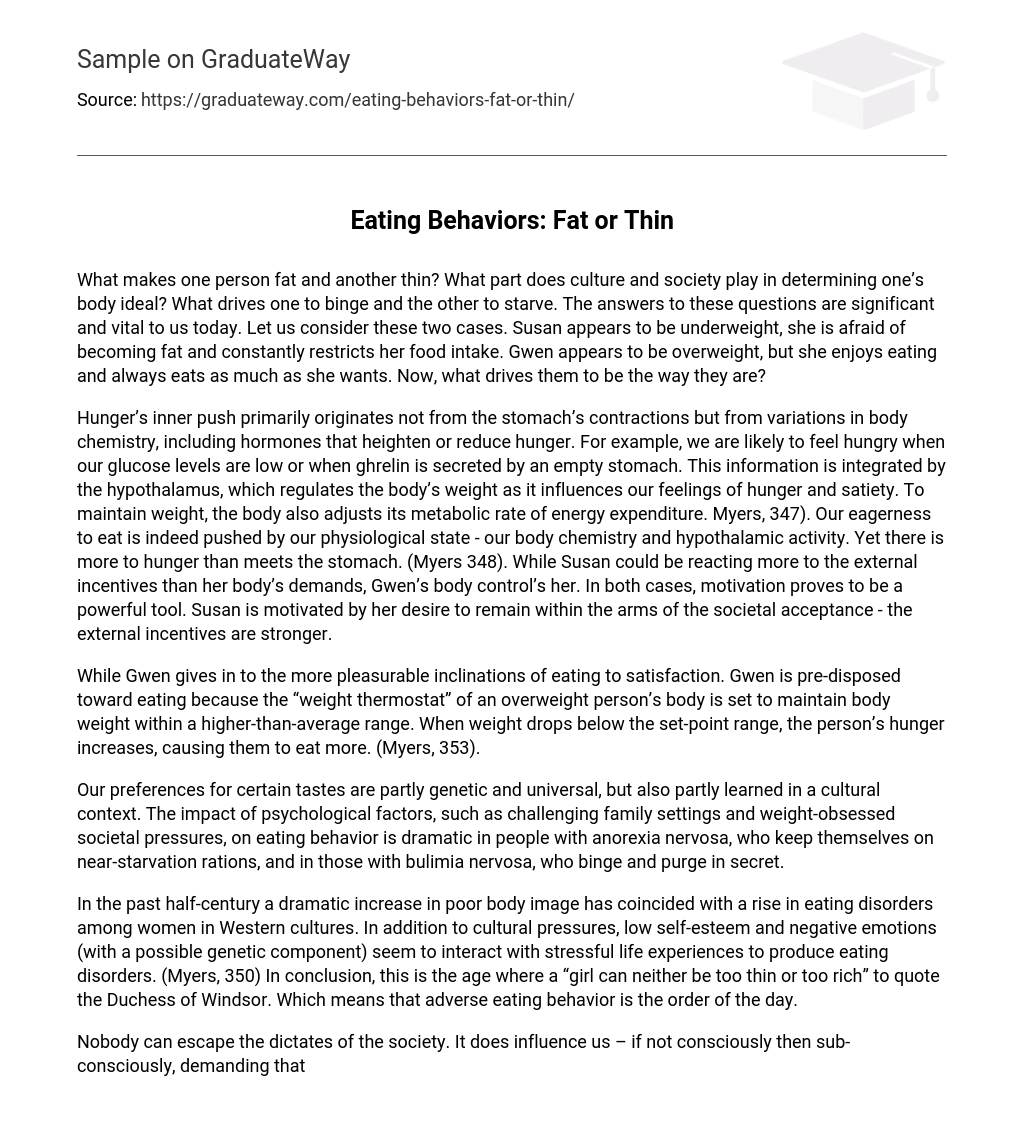What makes one person fat and another thin? What part does culture and society play in determining one’s body ideal? What drives one to binge and the other to starve. The answers to these questions are significant and vital to us today. Let us consider these two cases. Susan appears to be underweight, she is afraid of becoming fat and constantly restricts her food intake. Gwen appears to be overweight, but she enjoys eating and always eats as much as she wants. Now, what drives them to be the way they are?
Hunger’s inner push primarily originates not from the stomach’s contractions but from variations in body chemistry, including hormones that heighten or reduce hunger. For example, we are likely to feel hungry when our glucose levels are low or when ghrelin is secreted by an empty stomach. This information is integrated by the hypothalamus, which regulates the body’s weight as it influences our feelings of hunger and satiety. To maintain weight, the body also adjusts its metabolic rate of energy expenditure. Myers, 347). Our eagerness to eat is indeed pushed by our physiological state – our body chemistry and hypothalamic activity. Yet there is more to hunger than meets the stomach. (Myers 348). While Susan could be reacting more to the external incentives than her body’s demands, Gwen’s body control’s her. In both cases, motivation proves to be a powerful tool. Susan is motivated by her desire to remain within the arms of the societal acceptance – the external incentives are stronger.
While Gwen gives in to the more pleasurable inclinations of eating to satisfaction. Gwen is pre-disposed toward eating because the “weight thermostat” of an overweight person’s body is set to maintain body weight within a higher-than-average range. When weight drops below the set-point range, the person’s hunger increases, causing them to eat more. (Myers, 353).
Our preferences for certain tastes are partly genetic and universal, but also partly learned in a cultural context. The impact of psychological factors, such as challenging family settings and weight-obsessed societal pressures, on eating behavior is dramatic in people with anorexia nervosa, who keep themselves on near-starvation rations, and in those with bulimia nervosa, who binge and purge in secret.
In the past half-century a dramatic increase in poor body image has coincided with a rise in eating disorders among women in Western cultures. In addition to cultural pressures, low self-esteem and negative emotions (with a possible genetic component) seem to interact with stressful life experiences to produce eating disorders. (Myers, 350) In conclusion, this is the age where a “girl can neither be too thin or too rich” to quote the Duchess of Windsor. Which means that adverse eating behavior is the order of the day.
Nobody can escape the dictates of the society. It does influence us – if not consciously then sub-consciously, demanding that we pay a queen’s ransom for being its subjects. It is a fact that being fat makes a person feel that he or she is not quite up to the mark and must make amendments for giving in to indulgence. No wonder then, that more than half-the-world seems to be on a diet. A society which chases perfection is actually chasing a mirage and is doomed to disappointment.
The fact that there is an emphasis on being thin and not fit, itself shows that this particular turn in culture and society needs a correction. But what else can you expect from a largely negative society and culture where people are motivated by their inadequacies instead of their strengths. The inadequacies are further strengthened by the media, which has turned natural eating behavior into an eating disorder.
Works cited
Myers G David, Exploring Psychology, Sixth Edition, Worth Publishers, 2003, New York, p. 345-356.





